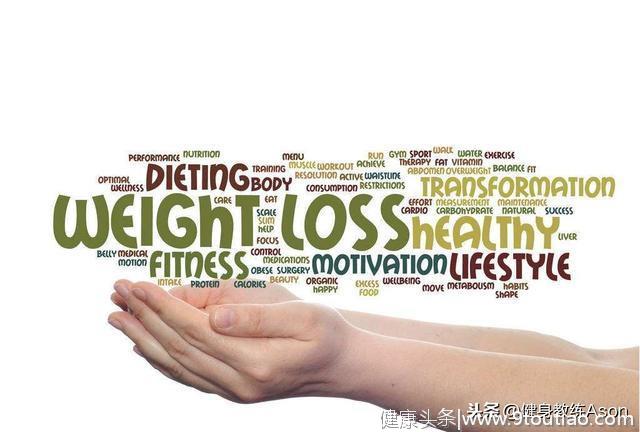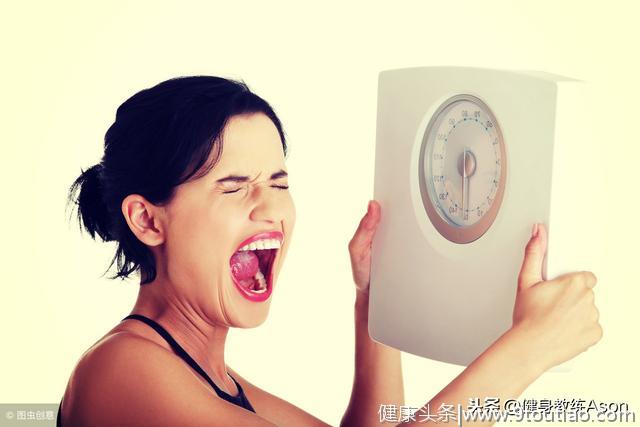什么是代谢适应?对减脂有什么影响?
我们都知道,身体成分在许多运动中都是非常关键的因素。无论你是要拿健美职业卡,或者减脂来改善你的速度,还是降低体重等级来比力量举,有效的减脂技巧会是你成功的关键。
2014年,Eric Trexler在国际运动营养学会期刊上发表了一篇文献(20)。这是一篇文献综述,讨论了节食对新陈代谢的影响,重点讨论了这篇文献是如何与运动员相关的。如果你读过这篇文献,而且你是一个有“正常”兴趣的人,你肯定就会觉得很无聊。因此,这篇文章的目的就是对这篇文献的一个总结。
什么是代谢适应?我们都知道,人体的适应能力是非常强的。尽管你在不断的给身体施加压力,你可能还是注意到了你能够不断的在杠铃上加越来越多的重量。
当人们谈论到肥胖时,你可能听说过「节俭基因假说」。大意就是人类会进化到一种基因类型,这种基因类型允许我们将多余的卡路里储存为脂肪,主要是作为一种生存机制。从本质上来说,我们可以在平常的日子里储存能源,来以防后来会遇到饥荒。

在减脂的过程中,会有两件事情发生:我们创造能量缺口,要么通过增加锻炼,要么通过降低食物摄入,然后我们会开始减重(最好大多数都是脂肪,而不是瘦体重)。这都表示能量供应的较低,并且身体进行相应的调整。简单来说,这些适应包含:
●增加线粒体效率(产生相同量的ATP需要燃烧更少的卡路里)(1,7)
●降低能量消耗(代谢率)(5,17,18)
●促进分解和饥饿的激素分泌提高,促进合成代谢、能量消耗和满足感的激素分泌降低(15,19)
这些适应有什么影响?正如你所能想到的,这些适应会直接有悖于你的减脂目标。线粒体效率和能量消耗的改变降低了你的热量缺口,这就会减缓减脂的过程。此外,激素的改变会让身体更难维持瘦体重,还会影响能量水平和情绪状态,并且增加饥饿感。一个特别不好的结果就与性激素有关---许多自然男性健美运动员在备赛后期就会经历低睾酮的症状(14,19),停经通常也是女性运动员所经历的(10)。
这些适应的影响在减脂期后还能继续延续。假如说你减到了你需要的体重级,或者说你达到了可以上台比赛的体脂水平。会怎样?即使在你减脂过后,研究显示当你试图保持新的体重时,这些适应仍会有部分存在(12,17)。这些适应会很容易让你反弹。如果你在减脂结束后不去发展一定程度的限制能力,快速的体重反弹会很常见。

另外,研究显示在这个阶段增长的体重会更容易被储存为脂肪(21),以及可能会发生脂肪细胞增生(9)。这可能导致一种称为饥饿后肥胖(21)或者体脂过剩(6)的现象。在这种情况下,节食者重新增长的脂肪甚至比减脂期减去的脂肪还要多。最终,这会减缓整个饮食过程中的进步,并使以后的节食更加困难。
有关代谢适应的常见误解代谢适应在健身教练和运动员中也成为了非常流行的讨论话题,因此,也就出现了一些常见的误解。其中包含了:
1.代谢适应会让减脂变为不可能,或者尽管你处于能量缺口状态还是会让你增重
代谢适应并不是热力学定律的超自然现象,这些适应只是为了减少能量的消耗。因此,能量赤字变得更小了,减脂最终会因为能量消耗接近能量摄入而停止。在这个时候,如果进一步增加锻炼或者降低卡路里摄入,减脂还是会继续。但是如果当训练量已经很高以及卡路里摄入已经很低时,就会变得非常复杂。在有些情况下,你确实会到达一个界限,此时再做极端的调整并不推荐,也不实际且不健康。
2.这些适应是一个可怕的问题
并非如此。这些都是自然伴随着减脂和解决你身体在热量缺口下面临的“能量危机”而出现的适应现象,特别是当你体脂非常低时。真正可怕的问题是没有出现这些适应现象,这样人类就会更容易挨饿。如果是这样的话,我们的进化史又是另一回事了。
3.这些适应表明饮食做的不好
这同样不对。在一定程度上,这些适应将伴随着卡路里的减少和体重的减轻而出现。即使是最佳的减脂方法,这些适应还是会在一定程度上发生。然而,它们很可能会由于不恰当的方法而恶化,因此是可以通过更理想的方法来减轻的。
为了避免这些适应我们可以做什么?不幸的是,这些适应不可能完全被避免。然而,你可以通过采取正确的饮食技巧来最小化这种现象。
显然,足够的蛋白质摄入很重要。它的食物热效应是常量营养素中最高的,并且满足感很强(16)。此外,它能帮助瘦体重和代谢率的维持(11)。在设计良好的抗阻力训练计划中也是如此(2)。但是既然你已经在读了我的文章,我想你应该都做到了。
理论上来说,这些适应的幅度可能与热量缺口的大小有关(20)---更大的热量赤字意味着更紧急的能源危机。因此,建议采用能达到明显体重减少的最小热量缺口,并建立相对缓慢的体重减轻速度(3)。当减脂进程开始停滞时,做适当的、相对保守的调整来增加热量缺口,并通过逐步的、周期性的调整来继续。
当设法达到非常低的体脂时,有氧运动通常就是必须的了。然而,作为一般性原则,在整个减脂过程中,最好还是把有氧保持在最低的水平。有氧运动不仅有可能阻碍你从抗阻力训练中恢复,而且同时训练的干扰效应可能会适得其反。当有必须开始有氧运动时,最好避免高冲击形式和长时间的有氧。中等强度的有氧运动和固定自行车上的高强度间歇运动是可靠的选择(22)。

周期性的进行碳水化合物补偿在形体运动中目前非常流行。理论上来说,这能通过短暂提高瘦素水平来影响代谢率和满足感(4),但该话题还需要更多的研究。另外一种由形体运动员采用的流行方法就是反向节食(reverse dieting),这是指慢慢的增加卡路里摄入,而不是直接恢复到较大的热量盈余。虽然在这个方法上几乎没有相关的数据,但是理论上可以帮助维持减去的体重,也可以帮助减脂后阶段防止体脂反弹。但这都只是猜测性的,还需要更多的研究来证实。
总结伴随着能量限制和减重减轻,会出现一些代谢适应。这些适应可能是避免饥饿的生存机制,通常有助于提高效率和减少热量缺口。虽然代谢适应不是可怕和危险的事情,但它肯定与减肥目标相悖。另外,虽然不能完全避免这种现象,但是良好的训练和饮食计划可能会将这些适应最小化并且帮助我们更成功的去减重。通过采用合理的减脂策略,你可以更有效地减脂,增加维持减重的可能性,并为改善身体成分和运动表现做好准备。
#燃烧我的卡路里#
参考文献:
1. Bevilacqua L, Ramsey JJ, Hagopian K, Weindruch R, and Harper ME. Effects of short- and medium-term calorie restriction on muscle mitochondrial proton leak and reactive oxygen species production. American journal of physiology Endocrinology and metabolism 286: E852-861, 2004.
2. Bryner RW, Ullrich IH, Sauers J, Donley D, Hornsby G, Kolar M, and Yeater R. Effects of resistance vs. aerobic training combined with an 800 calorie liquid diet on lean body mass and resting metabolic rate. Journal of the American College of Nutrition 18: 115-121, 1999.
3. Chaston TB, Dixon JB, and O’Brien PE. Changes in fat-free mass during significant weight loss: a systematic review. International journal of obesity 31: 743-750, 2007.
4. Dirlewanger M, di Vetta V, Guenat E, Battilana P, Seematter G, Schneiter P, Jequier E, and Tappy L. Effects of short-term carbohydrate or fat overfeeding on energy expenditure and plasma leptin concentrations in healthy female subjects. International journal of obesity and related metabolic disorders : journal of the International Association for the Study of Obesity 24: 1413-1418, 2000.
5. Doucet E, St-Pierre S, Almeras N, Despres JP, Bouchard C, and Tremblay A. Evidence for the existence of adaptive thermogenesis during weight loss. The British journal of nutrition 85: 715-723, 2001.
6. Dulloo AG, Jacquet J, and Girardier L. Poststarvation hyperphagia and body fat overshooting in humans: a role for feedback signals from lean and fat tissues. The American journal of clinical nutrition 65: 717-723, 1997.
7. Esterbauer H, Oberkofler H, Dallinger G, Breban D, Hell E, Krempler F, and Patsch W. Uncoupling protein-3 gene expression: reduced skeletal muscle mRNA in obese humans during pronounced weight loss. Diabetologia 42: 302-309, 1999.
8. Helms E, Aragon A, and Fitschen P. Evidence-based recommendations for natural bodybuilding contest preparation: nutrition and supplementation. Journal of the International Society of Sports Nutrition 11: 20, 2014.
9. Jackman MR, Steig A, Higgins JA, Johnson GC, Fleming-Elder BK, Bessesen DH, and MacLean PS. Weight regain after sustained weight reduction is accompanied by suppressed oxidation of dietary fat and adipocyte hyperplasia. American journal of physiology Regulatory, integrative and comparative physiology 294: R1117-1129, 2008.
10. Lagowska K, Kapczuk K, Friebe Z, and Bajerska J. Effects of dietary intervention in young female athletes with menstrual disorders. Journal of the International Society of Sports Nutrition 11: 21, 2014.
11. Layman DK, Boileau RA, Erickson DJ, Painter JE, Shiue H, Sather C, and Christou DD. A reduced ratio of dietary carbohydrate to protein improves body composition and blood lipid profiles during weight loss in adult women. The Journal of nutrition 133: 411-417, 2003.
12. Leibel RL and Hirsch J. Diminished energy requirements in reduced-obese patients. Metabolism: clinical and experimental 33: 164-170, 1984.
13. Maclean PS, Bergouignan A, Cornier MA, and Jackman MR. Biology’s response to dieting: the impetus for weight regain. American journal of physiology Regulatory, integrative and comparative physiology 301: R581-600, 2011.
14. Maestu J, Eliakim A, Jurimae J, Valter I, and Jurimae T. Anabolic and catabolic hormones and energy balance of the male bodybuilders during the preparation for the competition. Journal of strength and conditioning research / National Strength & Conditioning Association 24: 1074-1081, 2010.
15. Maestu J, Jurimae J, Valter I, and Jurimae T. Increases in ghrelin and decreases in leptin without altering adiponectin during extreme weight loss in male competitive bodybuilders. Metabolism: clinical and experimental 57: 221-225, 2008.
16. Paddon-Jones D, Westman E, Mattes RD, Wolfe RR, Astrup A, and Westerterp-Plantenga M. Protein, weight management, and satiety. The American journal of clinical nutrition 87: 1558S-1561S, 2008.
17. Rosenbaum M, Hirsch J, Gallagher DA, and Leibel RL. Long-term persistence of adaptive thermogenesis in subjects who have maintained a reduced body weight. The American journal of clinical nutrition 88: 906-912, 2008.
18. Rosenbaum M and Leibel RL. Adaptive thermogenesis in humans. International journal of obesity 34 Suppl 1: S47-55, 2010.
19. Rossow LM, Fukuda DH, Fahs CA, Loenneke JP, and Stout JR. Natural bodybuilding competition preparation and recovery: a 12-month case study. International journal of sports physiology and performance 8: 582-592, 2013.
20. Trexler ET, Smith-Ryan AE, and Norton LE. Metabolic adaptation to weight loss: implications for the athlete. Journal of the International Society of Sports Nutrition 11: 7, 2014.
21. Weyer C, Walford RL, Harper IT, Milner M, MacCallum T, Tataranni PA, and Ravussin E. Energy metabolism after 2 y of energy restriction: the biosphere 2 experiment. The American journal of clinical nutrition 72: 946-953, 2000.
22. Wilson JM, Marin PJ, Rhea MR, Wilson SM, Loenneke JP, and Anderson JC. Concurrent training: a meta-analysis examining interference of aerobic and resistance exercises. Journal of strength and conditioning research / National Strength & Conditioning Association 26: 2293-2307, 2012.